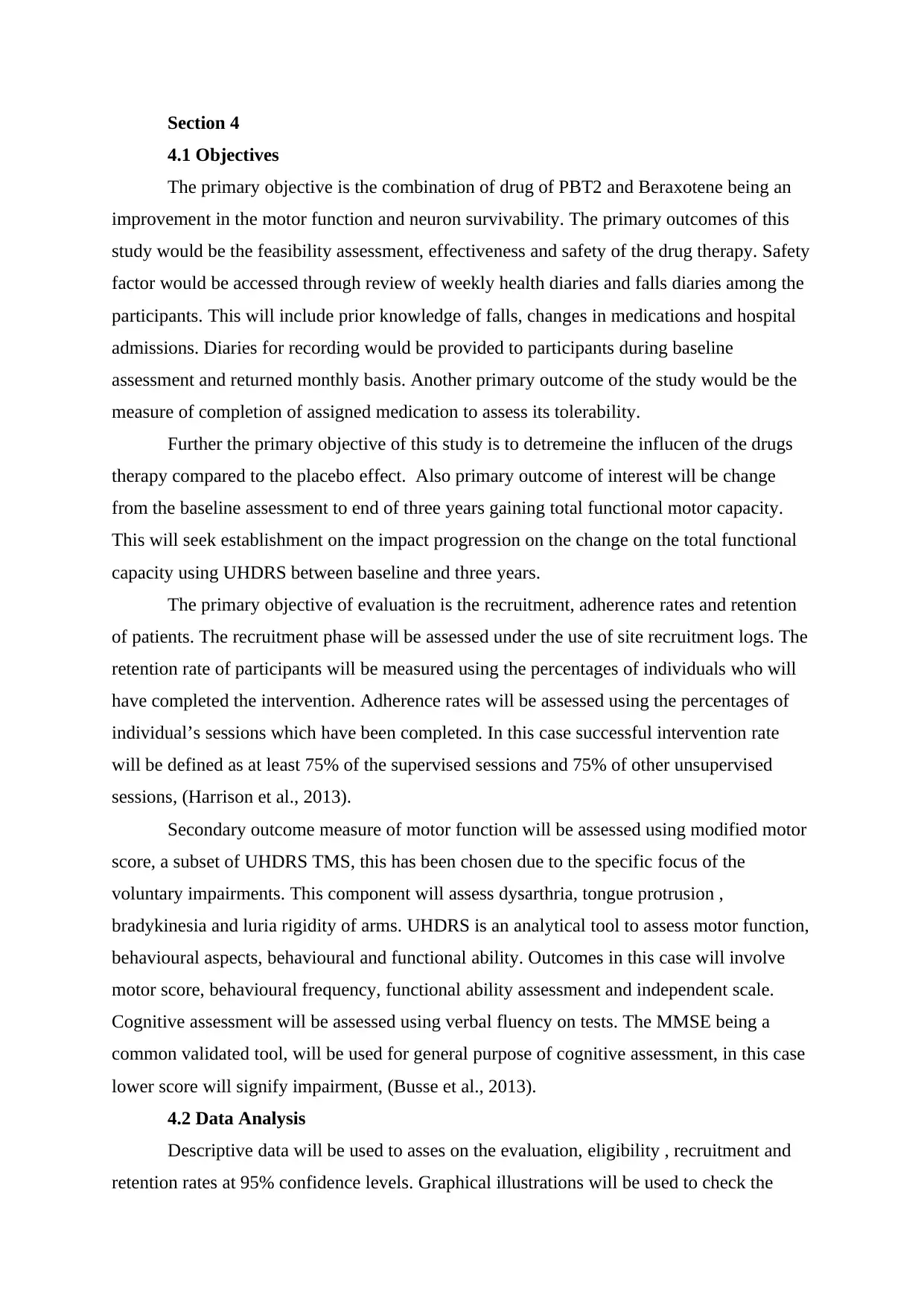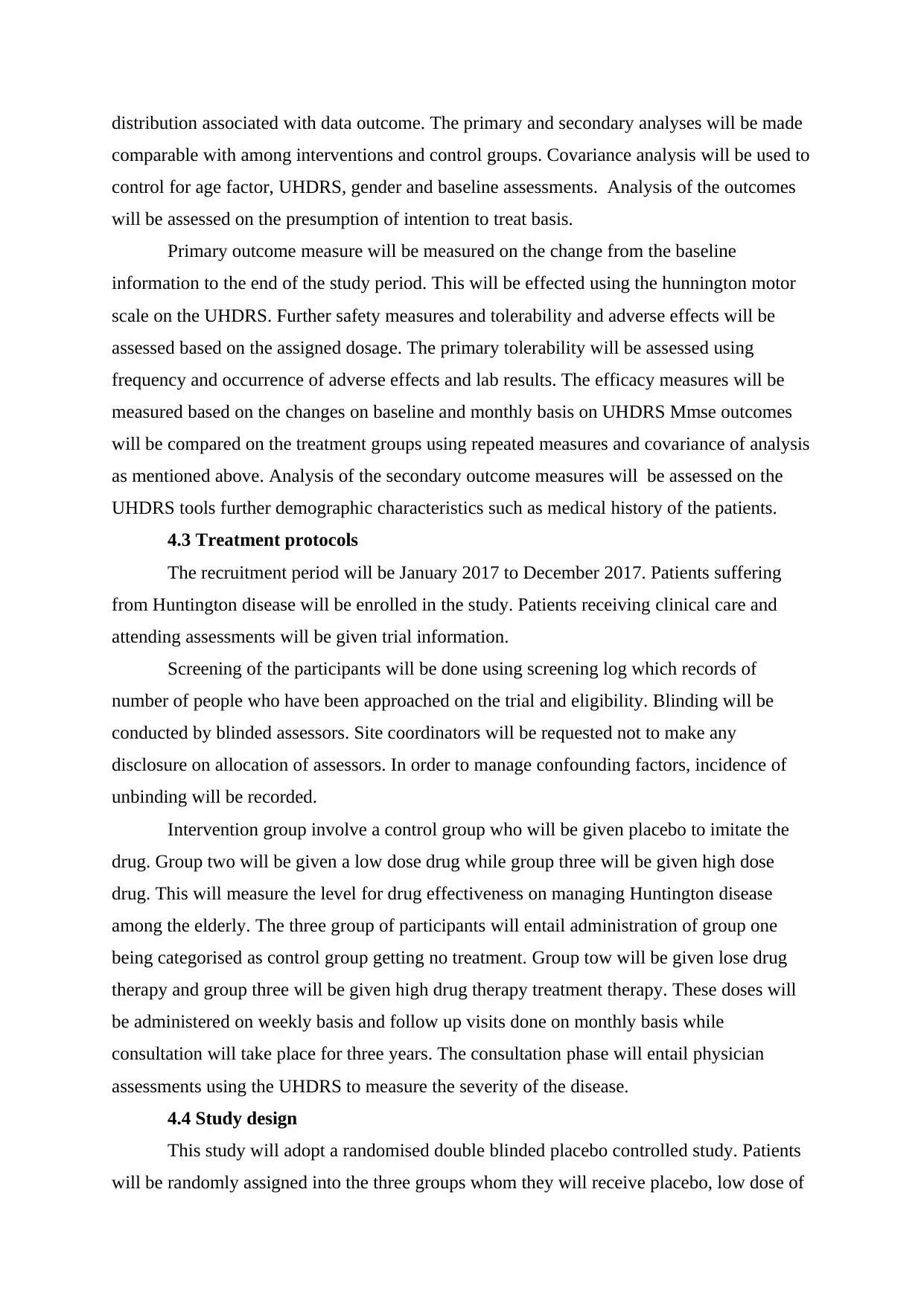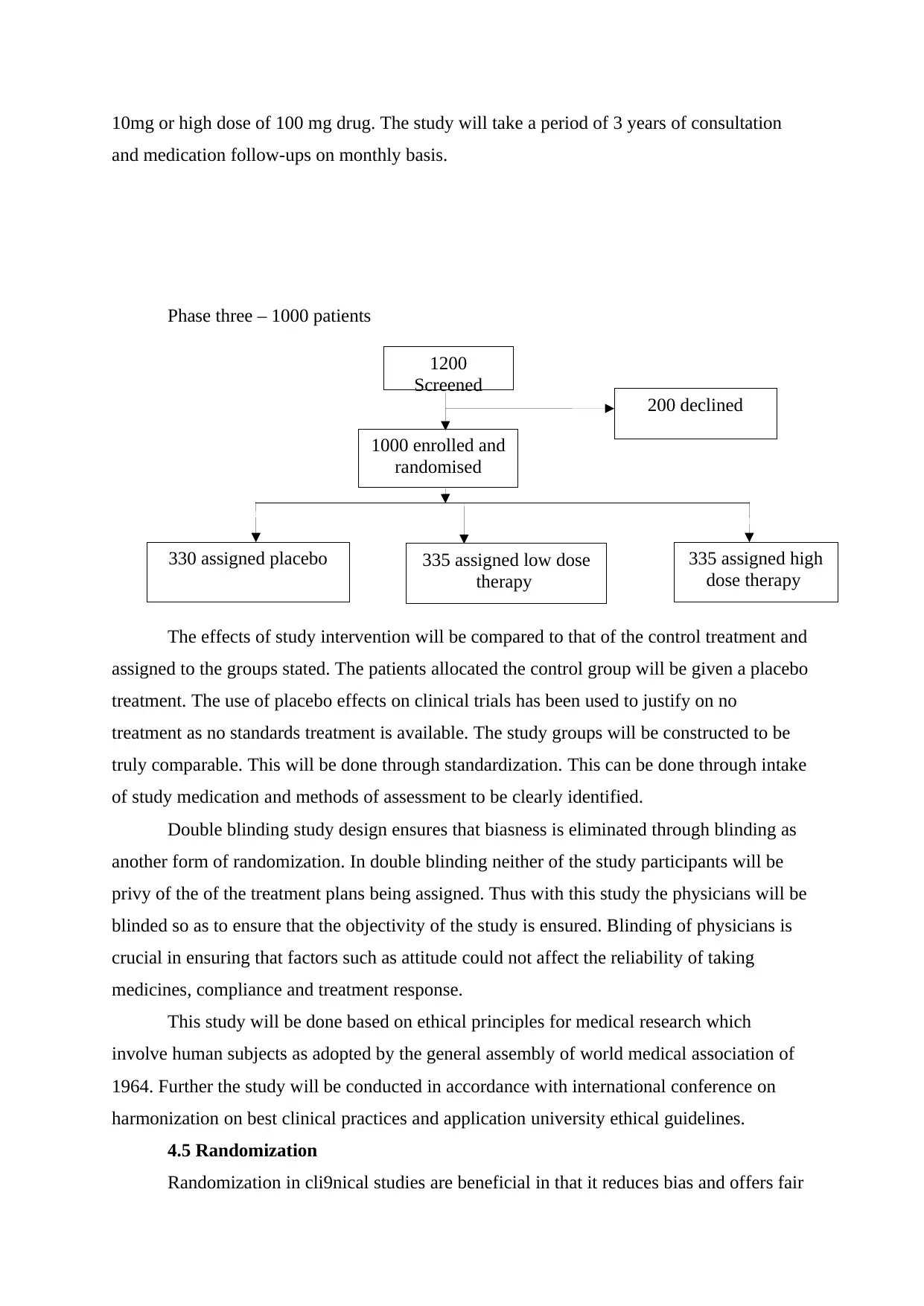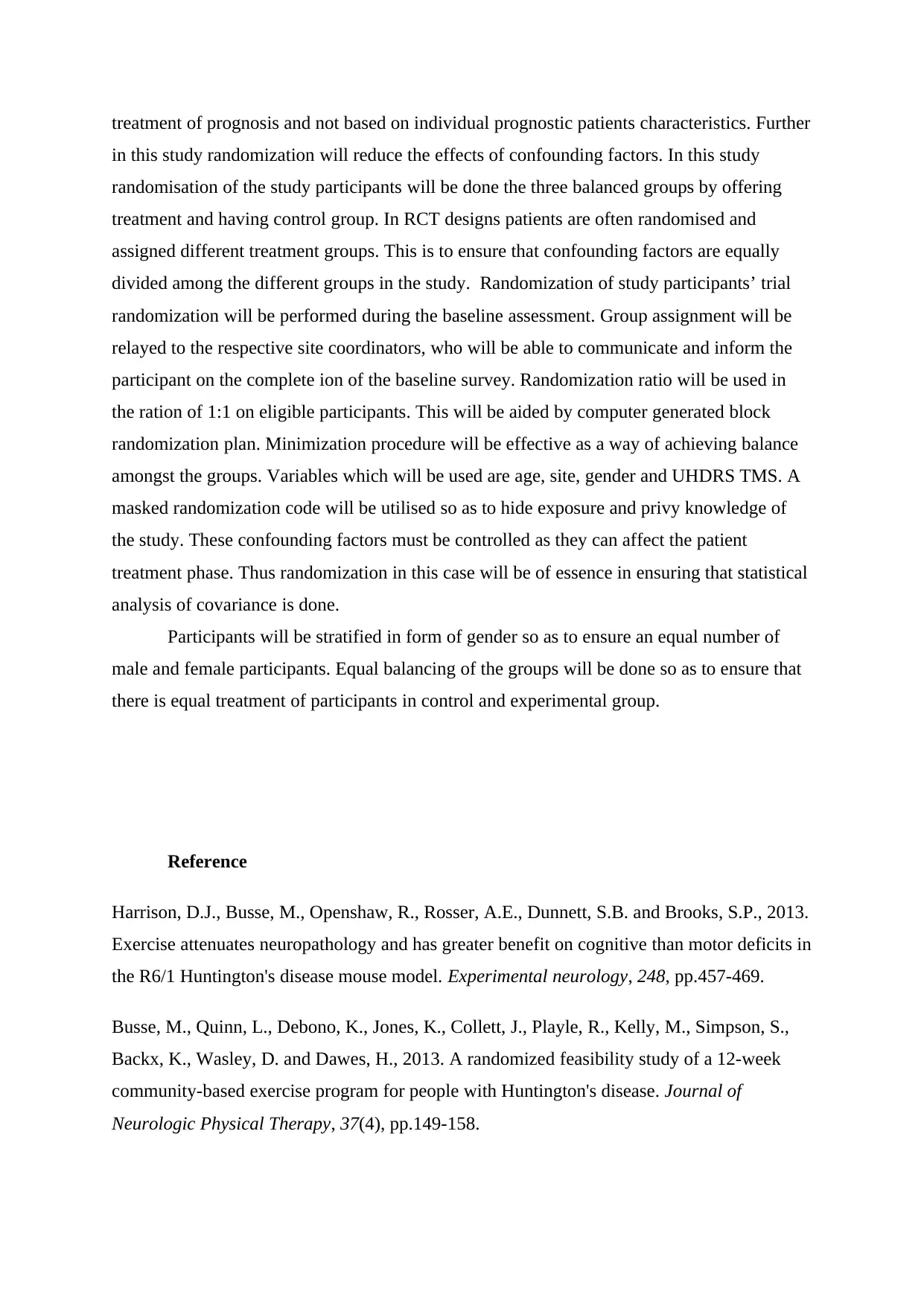MED3ABS Clinical Drug Development: Huntington's Trial with PBT2
VerifiedAdded on 2023/06/15
|5
|1617
|491
Project
AI Summary
This document presents a clinical trial project focused on evaluating the efficacy and safety of a combination therapy involving PBT2 and Beraxotene for treating Huntington's Disease (HD). The study employs a randomized, double-blinded, placebo-controlled design over three years, involving 1000 patients divided into three groups: a placebo control, a low-dose drug group (10mg), and a high-dose drug group (100mg). The primary objective is to assess improvements in motor function and neuron survivability, measured by changes in the Unified Huntington's Disease Rating Scale (UHDRS) from baseline to the end of the study. Secondary outcomes include cognitive assessments using verbal fluency tests and the Mini-Mental State Examination (MMSE). The study also focuses on recruitment, adherence, and retention rates, with data analysis using descriptive statistics, covariance analysis, and intention-to-treat principles to compare interventions and control groups while controlling for confounding factors like age, gender and baseline UHDRS scores. Ethical considerations are addressed, adhering to international guidelines and ethical principles for medical research involving human subjects.
1 out of 5









![[object Object]](/_next/static/media/star-bottom.7253800d.svg)